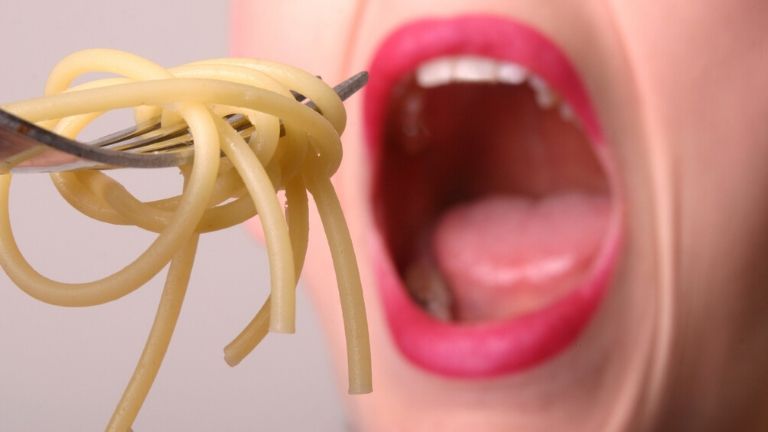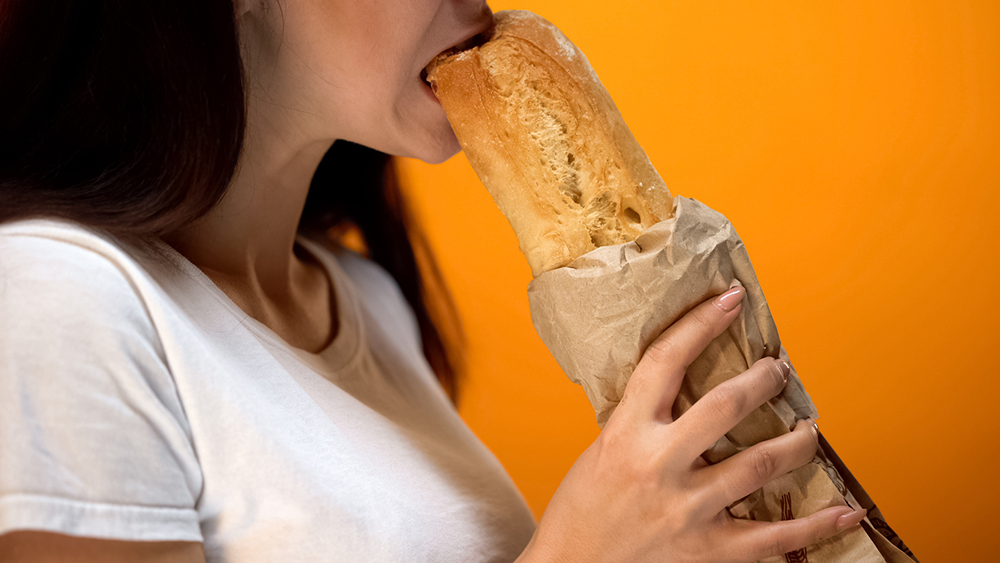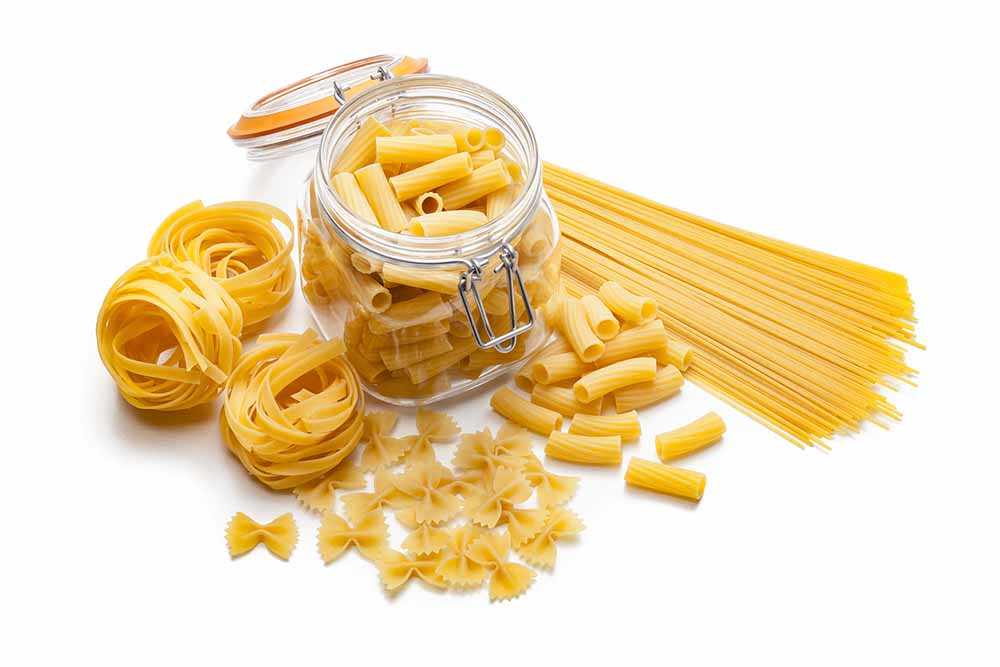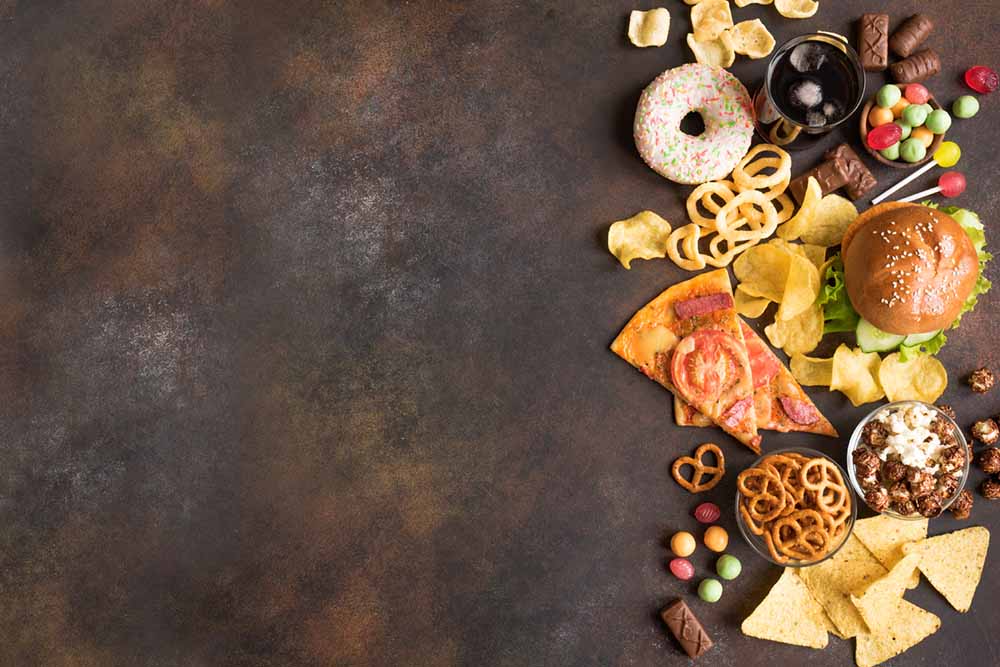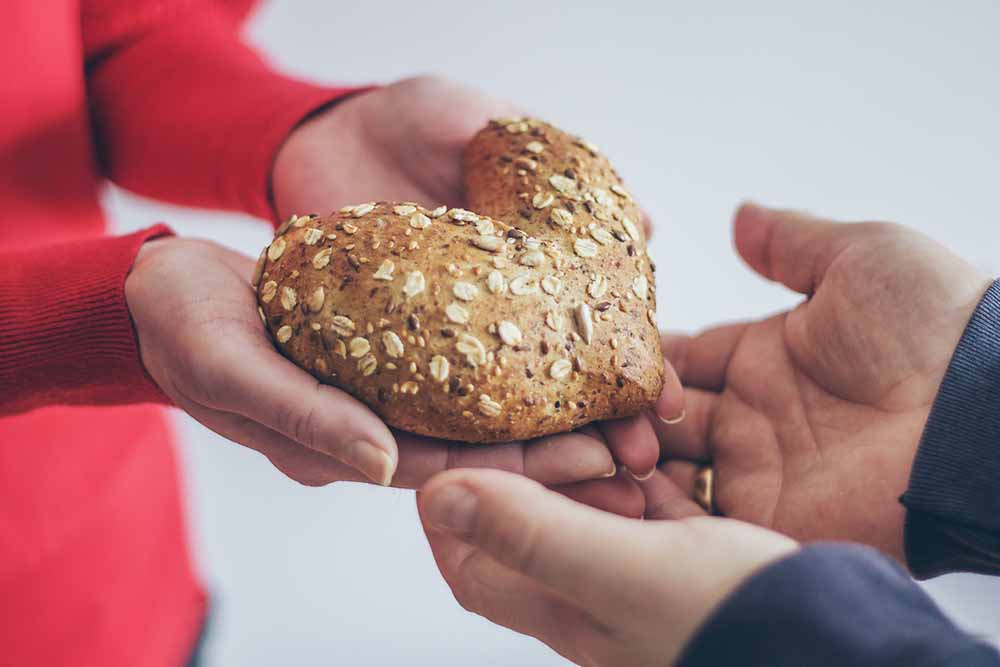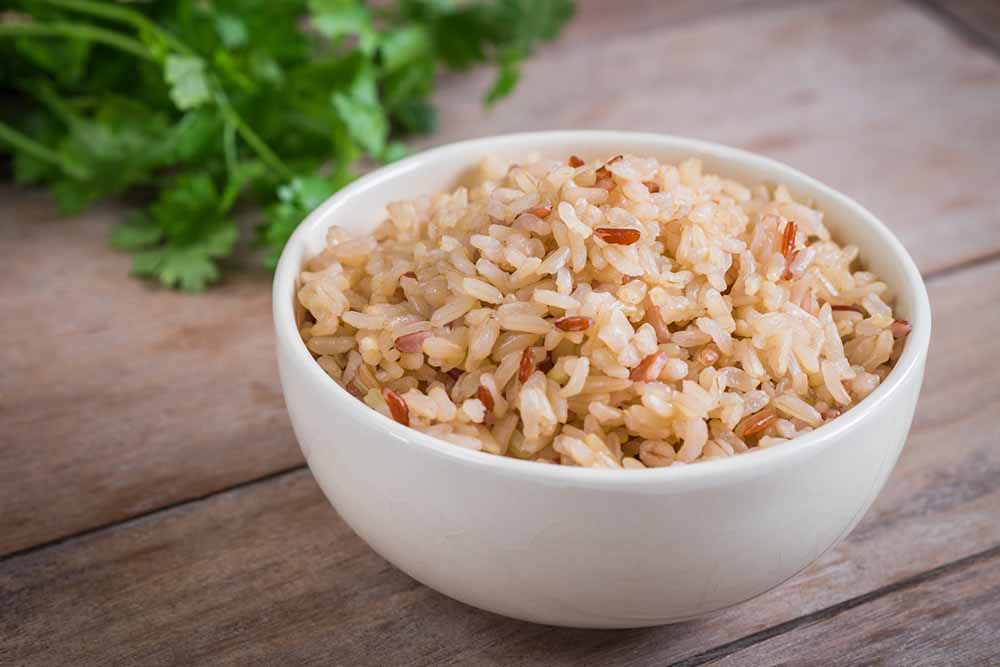Do carbs make you fat or not? Personal trainer and nutritional therapist Terry Fairclough from Your Body Programme sets the record straight on good, bad and ugly carbs
Carbohydrates always receive bad press.
I often hear people say they are ‘cutting out carbs’, as though it will be the magic cure-all for their weight problems.
For some people carbs may be the problem, but it’s far more likely that they aren’t losing weight for a plethora of other reasons.
Carbs aren’t only found in foods such as bread and pasta – they’re also found in wholegrain, fruits and vegetables
Are they eating too many calories in general? Or, too little – as that too will prevent weight loss. Are they exercising effectively? Are their hormones in balance? Are they stressed? Are they sleeping enough?
All these things will effect different people in different ways. Carbs and how the body uses them is more complicated than most people think but it doesn’t mean they can’t understand exactly how it all works.
Carbs aren’t only found in foods such as bread and pasta like many people believe. They are also found in wholegrains, vegetables and fruits, which are extremely healthy foods that our body needs in order to function and be healthy.
In fact, these foods are essential for good health as they are full of important nutrients, antioxidants, enzymes, polyphenols and fibre – which is all the more reason to make sure we aren’t cutting these foods out of our diets just because they consist of ‘carbs’.
Yes, it’s true that eating the wrong type of carbs, in the wrong amounts, at the wrong time of day can contribute to fat gain, but so can eating the wrong type of protein and fat.
Understanding how carbs actually work and how important they are is a huge help in learning how to lose or maintain weight sensibly.
How does the body use carbohydrates?
When we eat a meal or snack, the carbohydrates from that food are broken down into glucose which then circulates the body through our blood. This glucose that’s transported around our body provides us with an immediate source of energy, which we use for activity or exercise.
If we are sedentary, or have a job that involves a lot of sitting at a desk, then the glucose is pushed into our muscles and liver and stored as glycogen for later use.
Once these muscle and liver stores are full of glycogen, any excess glucose from the carbohydrates we have eaten that is still travelling through our bloodstream, will be stored as fat.
So basically, if your glycogen stores are already full after you have eaten carbs, and you go on to consume more carbs or you ate too many to begin with, you are more likely to store those extra carbs as fat.
The next consideration is how big your glycogen stores are and how quickly you use them up, and this is different for everyone depending on their body type.
There are three different body types, endomorphs, mesomorphs and ectomorphs. The best way to tell what body type you are is quite simply by looking in the mirror, but it’s important to be objective when evaluating yourself. Take a close look at your physique and at your body’s frame.
Are you long and lean and lose weight easily? Maybe you’re an ectomorph. Broad and stocky and tend to put weight on easily? You could be an endomorph. Do you have proportional shoulders and hips and look naturally athletic? Perhaps you are a mesomorph.
Read more: How your body type affects your weight loss – body transformation week 3
Endomorph body types tend to have bigger glycogen stores, as they have what is known as fast twitch muscle fibres.
Those with fast twitch muscle fibres are best suited for quick, explosive movements and exercise. For this they require quick release carbs for energy such as white pasta, bread and rice in order to have enough energy to complete those fast explosive exercises.
Endomorphs also tend to have a slower metabolism, so if you have a more sedentary lifestyle as an endomorph, your glycogen stores will take longer to be used up. If this is the case then your need for carbohydrates will be lower than other peoples.
Conversely, ectomorph body types have smaller glycogen stores and use them up far quicker as they have predominantly slow twitch muscle fibres.
Those who have slow twitch muscle fibres, are best suited for endurance type exercise such as running or cycling. This utilises the stored glucose in our bodies and can also burn a high percentage of fat also.
Treat your body like a machine
The more active we are, the more carbohydrates we will need. We should look at our bodies like a machine – the more it is used the more fuel or energy it will require – which we predominantly get from carbohydrates.
Like different fuels (coal, petrol and diesel), there are different types of carbohydrates, and how these are used should also be different.
Different carbs have different gycaemic values. This is a measure of the speed at which the glucose from the carb enters your blood stream.
This is significant because glucose from fast releasing carbs such as white bread, pasta, rice and sweets enter the blood steam quickly.
This sudden increase in blood sugar creates an over reaction by the body, as too much glucose in the blood is toxic and can be damaging. In the panic, insulin is released by the pancreas to push the excess glucose into muscle, liver and adipose (fat) cells.
Whether your body uses the carbohydrates you eat for energy or whether it stores them as glycogen, depends on your activity level and the intensity of that activity.
Also, where your body stores these carbohydrates (in muscle or in fat) depends on your glycogen (stored carbohydrate) status.
Your blood sugar levels drop after two hours without food or 25-30 minutes into a workout. This is when glycogen will be released for fuel. Only a finite amount of glycogen can be stored in the body and this varies from body type to body type.
An ectomorph body type, with a smaller glycogen storage capacity and a faster metabolism would be advised to spread carbohydrates throughout their meals throughout the day, rather than eating too much in one sitting.
Eating more carbohydrates than your body needs at any point will inevitably lead to it being converted to fat.
Can we eat carbs after 6pm?
I have recently seen Instagram posts showing a potato being the same before and after 6pm, while this is true, how we use our body before and after 6pm is generally not the same.
The majority of us are far more mentally and physically active during the day than we are in the evening. The food we consume is digested and enters the blood stream, we then use this to power whatever it is we are doing during the day.
If we are sitting at home after a long day at work we simply do not need as much energy as we needed during the day, so any extra fuel that isn’t being used or stored as glycogen in muscle will inevitably be stored as fat.
Too many of the wrong carbs at once can be bad news
Throughout the day blood glucose levels fluctuate outside the body’s desired blood glucose range. Blood sugar levels rise after a meal, stimulant or stress.
If you are feeling stressed, have eaten high glycemic carbohydrates or drank too much caffeine you will experience an initial rise in blood sugar, followed by a crash to below the desired levels, which then causes us to crave sweet foods to bring that level back to normal.
Insulin is the hormone responsible for keeping blood sugar levels within the normal and desired range. Insulin works by opening channels of cell membranes to facilitate glucose uptake from the blood into the cell.
A surge of sugar into the blood stream, by eating too many of the wrong carbs at once is dangerous to the body, as it will over react by releasing insulin and causing your blood sugar to drop too low. Remember that some of this sugar could potentially be stored as fat.
Keeping your blood sugar (glucose) balanced throughout the day is not only essential to prevent fat gain, it also prevents many other symptoms such as low energy, mood swings, depression, low immunity, inflammation, headaches, dizziness, cravings for sweet foods and palpitations.
Under-eating isn’t the answer either
When we are eating less than our body needs, also known as a catabolic state, we produce more of the stress hormone cortisol. Chronic release of cortisol causes the body to up-regulate fat receptors around cells to try and increase its stores.
Cortisol also interferes with proper thyroid regulation, and reduced thyroid output, further slowing metabolism. The long-term effects of that means when we go back to eating normally the metabolism is so slow that we gain all the fat back and more.
So what’s the carbohydrate verdict?
First of all, avoiding carbs is not the answer, using them wisely is.
Eating the correct type of carbohydrate and the right amount at the right time for your body type, lifestyle and goal is the key. That may sound confusing but it needn’t be and, once you get to grips with it, your carbohydrate need and intake will become second nature to you.
I have seen people get ‘short term’ results when cutting out carbohydrates. The reason for this isn’t always fat loss though.
For every molecule of carbohydrate there are two to three molecules of water attached, so weight (not fat) is lost from the removed carb stores and the water it was attached to.
Secondly, by removing our bodies preferred energy store – carbohydrates – it has to rely on the remaining options, fat and protein.
Yes, we will increase fat burning, but we will also break down protein from muscle which is biologically active, and remember the more muscle you have the more calories you burn, so you really don’t want to be losing muscle where you can help it.
Over a longer period of time the loss of protein will slow your metabolism, making it harder to lose fat. The body sees fat as its life preserving fuel. If we suddenly and dramatically alter our diet, the body will go into panic mode and do what it can to hold on to the fat.
Although we do not advocate eating low carbohydrate diets on Your Body Programme, certain body types (endomorphs and meso-endomorphs) who tend to be less tolerant to large amounts of carbohydrates, should eat a smaller percentage, without eating too few.
The bottom line is, the more sedentary a person is, the fewer carbohydrates they will need.
So, here’s what you should be eating
To help keep your blood sugar within a healthy range try to avoid refined foods (white bread, white pasta, white rice), sugary foods (confectionary, sugary drinks), convenience foods (they often contain hidden sugars and can be high in saturated fats) and stimulants (tea, coffee, alcohol, chocolate).
Instead, eat foods that balance blood sugar such as whole grains which are complex carbohydrates that release sugars slowly into the blood and provide sustained energy, helping balance blood sugar.
These include brown rice, quinoa, buckwheat, sweet potato, whole grain pasta and wholegrain bread. Oats are particularly good, making them an excellent choice, particularly for breakfast.
Aim for two to three pieces of fresh fruit and four to six portions of vegetables per day (a single portion is around 80g).
Fresh fruits and vegetables are a good source of fibre and contain essential vitamins and minerals that are needed for blood sugar balance and general health. Try to include a wide variety of colours including dark green leafy vegetables such as broccoli, spinach and kale.
Fibre found in fruit, vegetables, whole grains, beans and lentils also help slow the absorption of sugars into the bloodstream.
Essential fats, found in oily fish, nuts, seeds and their oils, improve insulin’s ability to transport glucose out of the blood into cells.
You should include a protein source at each meal and snack, ideally a source that does not contain high levels of saturated fats. Protein slows digestion which creates a slower release of sugar into the bloodstream and subsequently a gradual, even release of insulin.
Drink plenty of water (mineral/filtered if possible), herbal and fruit teas.
For me it’s all about eating a healthy balanced diet. We all need a wide variety of foods and macronutrients, however the ratio will differ depending on your body type, goal (muscle gain, fat loss, sculpting) and daily activity level.
In my opinion any diet or exercise plan that is extreme, will be unhealthy and will not work in the long term. Your body will always rebel.
So the bottom line is this: if you are active and you workout, keep a steady flow of small portions of complex carbohydrates in your meals throughout the day. If you have sedentary, office job don’t eat carbs after 6pm, have them two hours before your workout to help provide energy.
Terry Fairclough is one of the Your Body Programme’s founders, as well as a Personal Trainer and Nutritional Therapist.
When he is not busy writing notes on the back of his hand (rather than into Google Docs), then he likes to pump iron.
Terry is an Ectomorph who trains hard for his big guns.
Relevant Healthista Content:
I did a body transformation and lost 11 inches – this is what REALLY works for fat loss
30 day transformation using a low calorie diet
Healthista Content You May Also Like:
7 best Golden Globe body transformations
9 diet rules this celebrity personal trainer lives by
Body transformation week one – operation FAT LOSS
5 fat loss supplements proven by science
Like this article? Sign up to our newsletter to get more articles like this delivered straight to your inbox.



